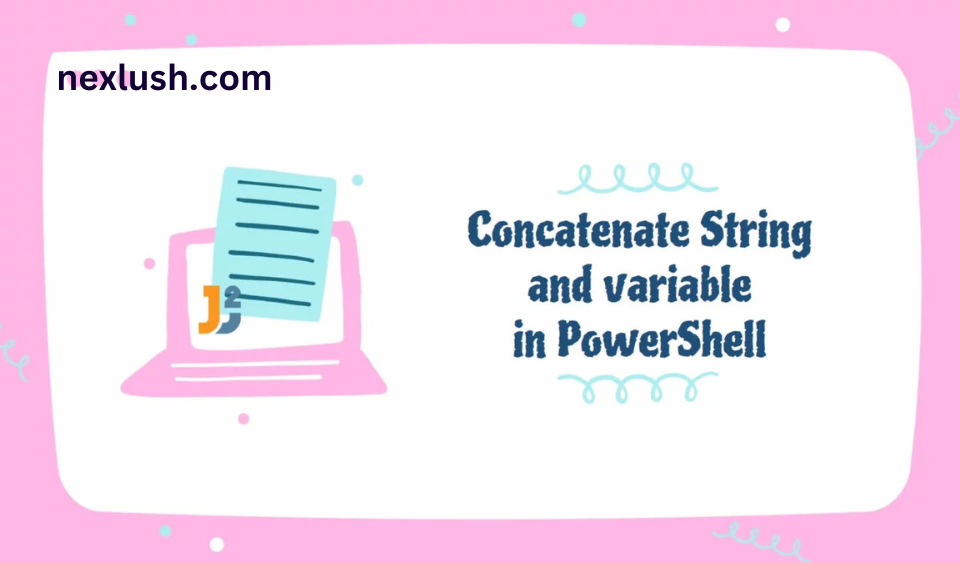powershell Concatenate String manipulation is an indispensable skill for any scripter. Strings are essential components in building messages, displaying values, and more – they allow scripters to craft messages with precision while being easily managed using string concatenation and splitting operations.
In this article, we’ll look at various methods for concatenating strings using PowerShell and offer tips for best using these techniques.
Variables of powershell Concatenate String
PowerShell string concatenation provides a quick and easy way to combine strings and variables. Use this technique to construct dynamic text, generate file paths, or generate output messages. One simple method of string concatenation is using the + operator; there are other approaches as well.
PowerShell variables serve as data-storing units of its language, and can represent any form of information. Common variable types include string, number and object. You can combine variables by either using concatenation operator or format operator; concatenation operator combines values into text while format operator formats the result while replacing placeholders with your variable’s value.
PowerShell allows you to compare string values using its Equals() and -eq operators, while using Substring() method you can split a string into its individual characters – for instance if using delimiter “day”, Substring() will return all characters following start index as results.
String manipulation routines that perform multiple additions or deletions on what appears to be one string can incur an immense performance penalty, due to strings being immutable; each time you use concatenation operator to append a character to an existing string, a new String object is created and needs to be initialized before further manipulation can take place.
Formatting
PowerShell strings are one of the primary data types and an integral component of many scripts. Strings can be used to display messages, prompt for input and send data directly into files. Furthermore, strings can be manipulated using various operations such as replacing characters or entire words, concatenating multiple strings together or even splitting one string into multiple strings.
One of the core PowerShell string manipulation techniques is formatting variables with escape sequences, or special characters preceded by back ticks that allow for printing otherwise unprintable characters. There are four such sequences commonly used – tab, carry return, carriage return line feed and $ (dollar sign).
PowerShell also supports a range of string expansion methods, including ToLower(), ToUpper(), PadRight() and Split(). Each one allows you to expand strings into other strings – ideal for creating complex patterns or performing comparisons. In addition, Join-Path cmdlet provides another useful string manipulation solution by joining file paths into one string.
Another popular string manipulation technique is string concatenation, the process of joining two or more strings together. While string concatenation may seem straightforward in most programming languages, PowerShell requires additional knowledge of its -Join operator and string manipulation techniques in order to accomplish it successfully.
Joining
Strings are one of the most frequently utilized data types in PowerShell, used to display messages, solicit input and send data files. To make using strings more efficiently it is crucial that one knows how to concatenate variables within this environment.
PowerShell offers several methods for joining strings together, such as using the plus operator or string interpolation. The former option is straightforward and can be used to concatenate string variables or text together, while string interpolation enables users to insert variable names directly into strings. PowerShell also features the -join command that allows multiple strings to be joined using specific separators; additionally it features string interpolation capability which enables variable names directly into strings.
PowerShell also supports a Split() function or method that lets you break string values apart into separate variables – particularly useful when working with file paths. In addition, its Join-Path cmdlet offers more flexible joining of paths than string concatenation can, as it handles different path separators and drive letters as well as being capable of joining multiple strings at the same time – making this command more suitable for scripts working with file systems.
Substitution of powershell Concatenate String
Strings are a fundamental data type in PowerShell and play an indispensable part of scripting. Used for everything from displaying information and prompting for input to being concatenated and split apart as needed – thanks to PowerShell string manipulation commands such as + and Concat() methods – strings serve many different functions that help create powerful scripts.
PowerShell also provides several other methods for working with strings, including comparison and replacement techniques that can help create more efficient and readable code. String manipulation may also include converting data types to strings or string variables into other data types – for instance using ToString() method you could convert any number to string variable.
When concatenating strings in PowerShell, it’s essential that you use the appropriate format or else your code could fail to execute as intended. String concatenation may result in unintended spaces if strings aren’t enclosed within double quotes – using curly braces () around variables in double-quoted strings can help avoid this problem.
PowerShell is case-sensitive, which can influence string comparisons and searches. To prevent problems from this nature, always enter string values using lowercase letters when entering them. Furthermore, SubString() allows for searching a particular string value within another one and returns all characters between a start index and end index of that string value.
Must read:

[…] Must Read: powershell Concatenate String […]